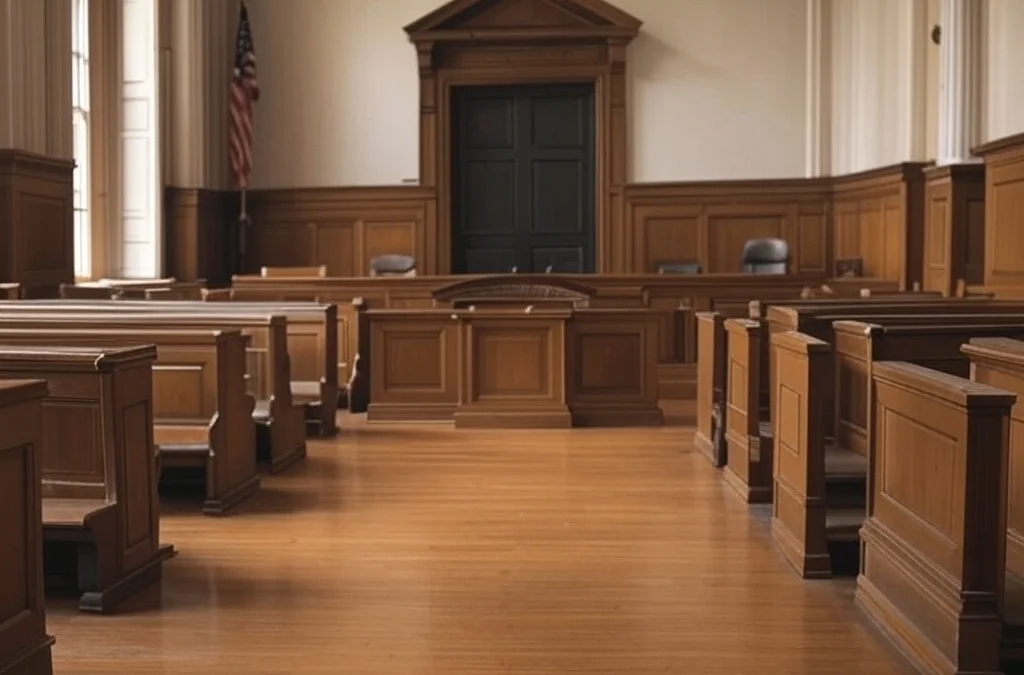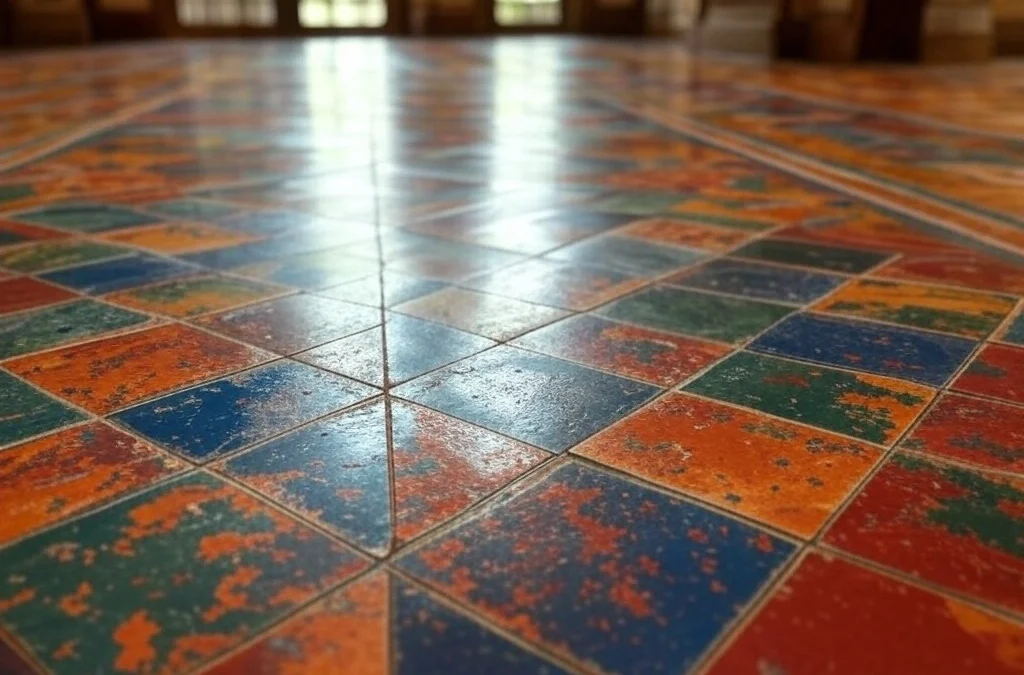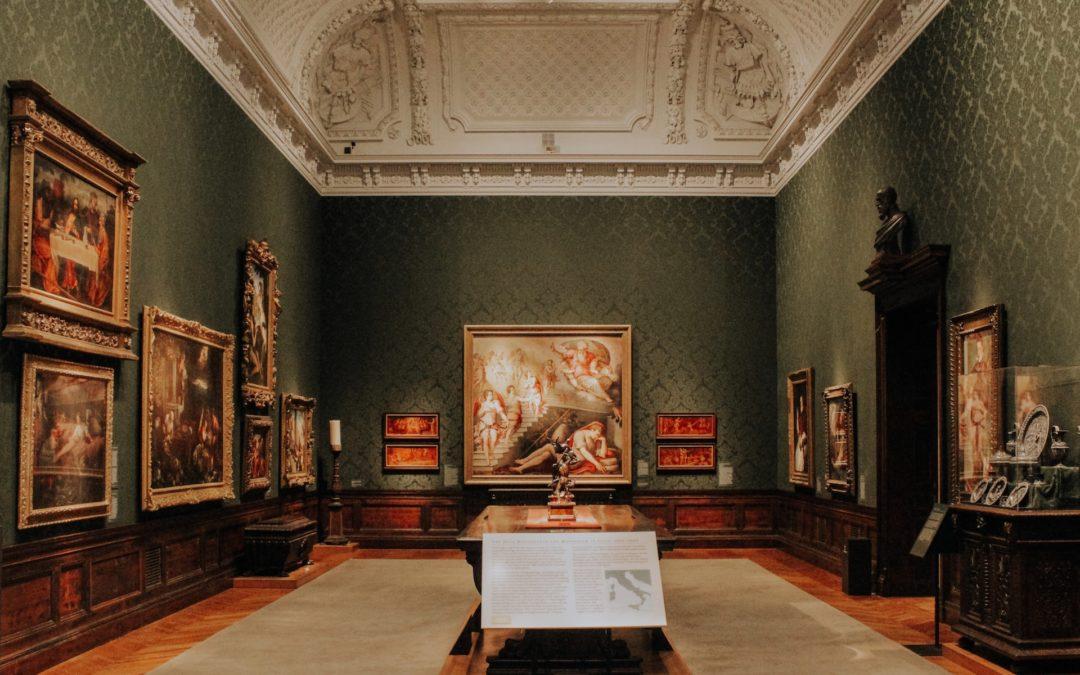Exploring a museum offers a unique journey through history, art, and culture, providing an enriching experience for visitors of all ages. With a myriad of exhibits and activities available, navigating your choices can be both exciting and overwhelming. This comprehensive guide aims to highlight the top 20 best things to do in a museum, ensuring that your visit is both enjoyable and informative. Whether you’re a first-time visitor or a seasoned museum-goer, these tips and activities will enhance your experience and deepen your appreciation of the treasures housed within these cultural institutions.
From participating in interactive exhibits to attending special workshops, this guide covers a range of activities suitable for various interests. We’ll explore how to engage with art in new ways, make the most of educational programs, and uncover hidden gems often overlooked by regular visitors. Our carefully curated list is designed to help you create a memorable and fulfilling museum adventure, ensuring that every trip you make is as enriching as it is entertaining. Get ready to discover the best ways to explore, learn, and be inspired during your next museum visit.
The Best Things to Do in Museum
1. Guided Tours
Guided tours are like personalized journeys through the museum’s collections. Knowledgeable guides lead you through the exhibits, offering detailed insights into the significance of each artifact. They provide context, historical background, and interesting anecdotes that might not be apparent at first glance. The tour allows you to see the exhibits in a curated sequence, fostering a deeper understanding of the museum’s overall narrative.
2. Audio Guides
Audio guides provide a self-paced alternative to guided tours. They offer a more personalized experience, allowing visitors to choose the pace of their exploration. Audio guides often supplement the information available on exhibit labels, providing additional details, stories, and historical context. It’s like having a knowledgeable companion who enhances your understanding of the exhibits as you navigate the museum at your rhythm.
3. Interactive Displays
Museums are increasingly incorporating interactive displays to engage visitors actively. These hands-on exhibits allow you to interact with the content, offering a dynamic and immersive learning experience. Whether it’s a touch screen providing in-depth information or a simulation allowing you to experience historical events, interactive displays cater to diverse learning styles, making the visit more engaging and memorable.
4. Art Appreciation
Taking the time to appreciate the details of paintings and sculptures goes beyond mere observation. It involves delving into the artist’s technique, understanding the historical and cultural context in which the artwork was created, and deciphering the emotions conveyed. Art appreciation encourages a more profound connection with the creative process, fostering a richer and more nuanced understanding of the artistic expressions on display.
5. Themed Exhibits
Themed exhibits offer a curated exploration of a specific subject or concept. By organizing artifacts around a common theme, museums provide a cohesive narrative that deepens the visitor’s understanding. These exhibits often transcend individual pieces, creating a broader context that encourages reflection on the connections between different elements of the collection.
6. Attend Workshops
Workshops and art classes provide a hands-on dimension to the museum experience. Participating in these activities allows you to actively engage with the exhibits, channeling your creativity. Whether it’s creating art inspired by the collection or learning about artistic techniques, workshops offer a unique opportunity to connect with the exhibits on a personal and expressive level.
7. Photography
Photography enables you to capture the essence and beauty of the exhibits. It’s a means of creating a personal visual archive of your museum experience. While photographing, you can focus on specific details, compositions, or perspectives that resonate with you, turning the visit into a visual exploration. However, it’s essential to be mindful of museum rules to ensure the preservation of the artifacts.
8. Architectural Marvels
Museums are not just about their contents; they are architectural marvels in themselves. Taking time to appreciate the design and structure of the museum enhances the overall experience. Some museums are works of art, with architecture that complements and enhances the exhibits. The physical space becomes an integral part of the narrative, contributing to the immersive nature of the visit.
9. Historical Artifacts
Exploring historical artifacts is like stepping into a time machine. These objects offer a tangible and direct connection to different eras and civilizations. Examining historical artifacts up close allows you to appreciate the craftsmanship, technology, and cultural practices of bygone eras, fostering a sense of awe and reverence for the past.
10. Attend Events
Keeping an eye on the museum’s calendar for special events, lectures, or performances adds a dynamic layer to your visit. Events provide a live and interactive aspect to the museum experience, offering unique perspectives on the exhibits. Whether it’s a lecture by a guest speaker or a live performance inspired by the collection, attending events can broaden your understanding and appreciation of the museum’s offerings.
11. Reading Corners
Some museums carve out quiet spaces with reading corners where visitors can delve into related literature. These areas are like havens for book enthusiasts, providing a chance to take a break from visual stimuli and absorb more in-depth information. The curated selection of books and articles often complements the exhibits, offering additional context, historical background, or perspectives that enrich the overall museum experience.
12. Children’s Sections
Dedicated children’s sections within museums cater to young visitors, making the museum-going experience enjoyable and educational for them. These areas often feature interactive displays specifically designed for younger audiences. Children can engage in activities that blend learning with play, fostering a positive and memorable introduction to art, history, or science.
13. Museum Cafes
Museum cafes provide a welcome respite during a visit. Taking a leisurely break allows visitors to reflect on what they’ve seen while enjoying a cup of coffee or a snack. The ambiance of museum cafes often complements the overall aesthetic of the institution, creating a relaxing environment for contemplation and casual conversation.
14. Gift Shops
Museum gift shops offer a diverse array of unique souvenirs and gifts. Browsing through these shops is not just a shopping experience but a continuation of the museum visit. It’s an opportunity to bring home a tangible piece of the experience, whether it’s a book, a piece of artwork, or a trinket. Purchasing items from the gift shop also supports the museum’s mission and sustainability.
15. Virtual Tours
In an era of digital connectivity, some museums offer virtual tours, allowing individuals to explore their collections from the comfort of their homes. This option is particularly useful for those who may not have the opportunity to visit in person. Virtual tours often provide a 360-degree view of exhibits, accompanied by informative descriptions, bringing the museum experience to a global audience.
16. Museum Gardens
If a museum has outdoor spaces, exploring the gardens or surrounding grounds offers a peaceful contrast to indoor exhibits. Museum gardens are often thoughtfully landscaped, providing a serene environment to complement the cultural and historical richness found inside. It’s a chance to connect with nature and extend the museum experience beyond the walls.
17. Thematic Trails
Thematic trails guide visitors through a curated sequence of exhibits connected by a common theme. Following these trails enhances the coherence of the museum visit, offering a narrative thread that ties together diverse artifacts. It’s like embarking on a journey with a specific focus, allowing for a more profound and interconnected understanding of the collection.
18. Documentary Screening
Some museums have screening rooms dedicated to documentaries related to their collections. This audio-visual medium provides an informative and visually engaging way to learn more about specific exhibits or broader topics. Documentary screenings complement the static nature of exhibits by adding a dynamic and immersive element to the visitor experience.
19. Volunteer Opportunities
Inquiring about volunteer opportunities at a museum opens the door to a more involved and behind-the-scenes engagement. Museums often welcome volunteers who can contribute to various aspects of the institution, from assisting visitors to participating in educational programs. Volunteering provides a unique perspective and a chance to actively support the museum’s mission.
20. Reflect and Discuss
Taking time to reflect on the museum experience is a crucial part of the visit. Whether alone or with others, discussing favorite exhibits, sharing impressions, and exchanging perspectives can deepen the overall appreciation. This reflective process turns the museum visit into a meaningful and personal journey, leaving a lasting impact on the way visitors perceive and connect with the world around them.
What to Know Before Visiting a Museum for the First Time?
Visiting a museum for the first time can be a rewarding and educational experience. To make the most of your visit, here are some key tips:
Research the Museum: Before your visit, research the museum’s website. Check for opening hours, ticket prices, and any special exhibitions or events. Knowing the museum’s layout and the collections it houses can help you prioritize what you want to see.
Plan Your Time: Museums can be large and overwhelming. Decide how much time you want to spend and plan which exhibits or sections are a must-see. If the museum is very large, you might want to focus on a few sections rather than trying to see everything.
Read the Rules: Museums have rules to protect the artworks and ensure a pleasant experience for all visitors. These might include no photography, no food or drink, and no touching the exhibits. Familiarize yourself with these rules beforehand.
Dress Comfortably: Wear comfortable shoes as you will likely be doing a lot of walking. Also, dress in layers as the temperature inside museums can vary.
Consider a Guided Tour: Many museums offer guided tours which can provide deeper insight into the exhibits. These tours can be especially valuable for first-time visitors.
Stay Open-Minded: Museums are places of learning and inspiration. Be open to new experiences and perspectives. Take your time to appreciate the art and history presented.
Check for Discounts or Free Days: Some museums offer discounted tickets or free entry on certain days or times. This information can usually be found on the museum’s website.
Take Breaks: If you’re spending several hours at the museum, take short breaks to rest and reflect on what you’ve seen. Many museums have cafes or rest areas for visitors.
Avoid Peak Times: If possible, visit during off-peak hours (like weekday mornings) to avoid crowds.
Enjoy and Reflect: Finally, enjoy the experience. Museums are treasure troves of culture and history. Take time after your visit to reflect on what you’ve learned and seen.
By following these tips, your first museum visit can be an enjoyable and enriching experience. Remember, each museum is unique, so every visit can offer something new and exciting.
Tips on Making Your Museum Visit More Fun
- Research Beforehand – Before heading to the museum, take some time to research its collections and any special exhibits. Understanding what the museum has to offer helps build anticipation and allows you to tailor your visit to your interests. Knowing what to expect ensures that you make the most of your time and focus on the areas that resonate with you the most.
- Choose a Theme or Focus – Rather than trying to see everything, consider selecting a theme or specific area of interest within the museum. This could be centered around a particular artist, a specific period, or a type of artifact. Having a focused theme adds purpose to your visit, making it more enjoyable and meaningful. It also helps you avoid feeling overwhelmed by the sheer volume of exhibits.
- Take a Guided Tour or Use an Audio Guide – Enhance your museum experience by joining a guided tour or using an audio guide. Knowledgeable guides can provide in-depth insights into the exhibits, sharing stories and historical context that you might not discover on your own. This interactive and educational approach adds layers to your understanding and appreciation of the museum’s collections.
- Engage with Interactive Displays – Many museums feature interactive displays and hands-on exhibits. Take advantage of these opportunities to actively engage with the content. Whether it’s a touch screen providing additional information or a hands-on activity allowing you to experience a concept, interactive displays add a dynamic and entertaining element to your visit. They cater to different learning styles and make the experience more memorable.
- Bring a Friend or Family Member – Sharing the museum experience with others, be it friends or family, can enhance the enjoyment of your visit. Discussing exhibits, sharing observations, and engaging in friendly debates about interpretations create a social and fun dimension. Different perspectives can also deepen your understanding of the exhibits, making the visit more enriching.
- Take Breaks at Reading Corners or Cafes – Plan breaks at designated reading corners, museum cafes, or outdoor spaces. These breaks offer a chance to relax, absorb additional information from books or articles related to the exhibits, and reflect on what you’ve seen. It adds a contemplative and leisurely aspect to your visit, contributing to a more well-rounded experience.
- Attend Workshops or Events – Check the museum’s schedule for workshops, demonstrations, or events happening during your visit. Participating in hands-on activities or attending live performances adds an interactive and entertaining dimension. Workshops allow you to actively contribute to the creative process, while events provide a lively and dynamic atmosphere, making your visit more memorable.
- Capture Memories with Photography – Bringing a camera or using your smartphone to capture moments during your museum visit is a wonderful way to create lasting memories. Photography allows you to focus on specific details that resonate with you, helping you remember the intricate features of artworks or artifacts. It’s a visual diary of your experience, and reviewing the photos later can bring back the emotions and insights from your visit.
- Explore Virtual Tours or Apps – Some museums offer virtual tours or mobile apps that provide additional information and interactive features. Exploring these digital resources adds a modern and tech-savvy element to your visit. Virtual tours allow you to experience the museum from the comfort of your home, while apps may offer in-depth information, quizzes, or augmented reality features, enhancing your understanding and engagement.
- Visit the Gift Shop – The museum’s gift shop is more than just a place to buy souvenirs; it’s an extension of the museum experience. Browsing unique items related to the exhibits is a fun way to support the museum financially and bring home a tangible reminder of your visit. Whether it’s a book, artwork, or trinket, these items can hold sentimental value and serve as conversation starters.
- Follow Thematic Trails or Challenges – Many museums offer thematic trails or challenges for visitors. Following these curated routes or completing challenges adds a game-like element to the visit, making it more enjoyable and engaging. It provides a structured and interactive way to explore the exhibits, fostering a deeper connection and understanding of the museum’s collections.
- Take Your Time – Resist the temptation to rush through the exhibits. Taking your time allows you to absorb the details, read descriptions, and truly appreciate the artistry. A leisurely pace enables a more relaxed and enjoyable experience, allowing you to savor each exhibit and explore the nuances that may go unnoticed in a hurried visit.
- Create a Personal Connection – Finding a personal connection to the exhibits can significantly enhance your museum experience. Whether it’s drawing parallels between a historical artifact and a modern concept or interpreting artwork in your way, creating a personal connection fosters a deeper sense of meaning. It transforms the visit from a passive observation to a personal journey of discovery.
- Embrace Creativity – Allow your creativity to flourish during the museum visit. Imagine stories behind artifacts, interpret paintings in your way, or even sketch or take notes if you’re artistically inclined. Expressing yourself creatively adds a fun and personal touch to the experience, making it uniquely yours. It’s about engaging with the exhibits on a more intimate and expressive level.
What Do They Display in Museums?
Museums display a wide variety of artifacts, artworks, specimens, and objects that represent and showcase different aspects of human history, culture, science, and art. The specific types of items on display can vary widely depending on the museum’s focus and specialization. Here are some common categories of items displayed in museums. These categories are not exhaustive, and many museums may feature interdisciplinary exhibits that blend elements from multiple disciplines. Museums aim to educate, inspire, and preserve cultural and natural heritage for present and future generations. The diversity of items on display reflects the richness and complexity of human knowledge and creativity.
Art Museums
-
- Paintings – Works of art created with various mediums, styles, and techniques.
- Sculptures – Three-dimensional art pieces created from materials such as stone, metal, or wood.
- Photographs – Visual representations captured through photography.
- Prints and Drawings – Original drawings, prints, and illustrations.
History Museums
-
- Archaeological Artifacts – Objects from ancient civilizations, such as pottery, tools, and jewelry.
- Historical Documents – Manuscripts, letters, maps, and other written materials.
- Clothing and Textiles – Historical garments and textiles that provide insights into fashion and culture.
- Weapons and Armor – Military artifacts and tools from different periods.
Natural History Museums
-
- Fossils – Remains of plants, animals, or other organisms from prehistoric times.
- Minerals and Gemstones – Geological specimens showcasing the diversity of Earth’s minerals.
- Taxidermy – Preserved animals, often displayed in their natural habitats.
- Botanical Specimens – Preserved plants and plant-related exhibits.
Science and Technology Museums
-
- Scientific Instruments – Tools used in various scientific disciplines.
- Models and Demonstrations – Physical models illustrating scientific principles.
- Innovations and Inventions – Objects related to technological advancements and inventions.
Ethnographic Museums
-
- Cultural Artifacts – Objects representing the material culture of different societies.
- Traditional Clothing – Garments and textiles reflecting cultural identity.
- Ritual and Religious Objects – Items used in religious ceremonies and rituals.
Children’s Museums
-
- Interactive Exhibits – Hands-on displays and activities designed for children.
- Educational Games – Games and activities that promote learning through play.
- Child-Friendly Art – Artworks specifically created for a younger audience.
Specialty Museums
-
- Sports Memorabilia – Items related to sports history, such as jerseys, equipment, and trophies.
- Music Instruments – Displays of musical instruments and related artifacts.
- Automobiles and Transportation – Vintage cars, motorcycles, or modes of transportation.
Contemporary and Modern Art Museums
-
- Installation Art – Large-scale, immersive artworks often created for a specific space.
- Video Art – Moving image installations and multimedia artworks.
- Conceptual Art – Artworks that prioritize ideas and concepts over traditional aesthetics.
What Is the Best Thing About Museums?
The most enchanting aspect of museums lies in their ability to transcend time and space, offering visitors a profound journey through the tapestry of human history, art, and culture. These repositories of knowledge serve as sanctuaries where the past comes alive through carefully curated exhibits, artifacts, and artworks.
The best thing about museums is their power to ignite curiosity, spark creativity, and foster a deep appreciation for the diverse wonders that define our world. Whether marveling at the strokes of a masterful painting, exploring the mysteries of ancient civilizations, or engaging with interactive displays that bring science to life, museums serve as immersive portals where learning becomes an adventure.
They are timeless guardians of our collective heritage, providing a sanctuary where individuals can connect with the richness of human achievement, reflect on the intricacies of our shared past, and envision the possibilities of the future. In essence, the best thing about museums is their ability to inspire, educate, and transport visitors across the boundaries of time and knowledge.
Types of Museums
Art Museums
Art museums are sanctuaries of creativity, housing a vast array of visual expressions. From classical masterpieces to contemporary wonders, these institutions showcase paintings, sculptures, drawings, and photographs, providing a captivating journey through the evolution of artistic expression.
History Museums
History museums are time capsules that transport visitors to bygone eras. Through carefully curated artifacts, documents, and exhibits, these institutions narrate the stories of civilizations, societies, and historical events, offering a profound understanding of our shared past.
Natural History Museums
Natural history museums are windows into the wonders of the natural world. With displays of specimens ranging from fossils and rocks to plants and animals, they educate visitors about Earth’s biodiversity and the intricate connections within ecosystems.
Science and Technology Museums
Science and technology museums unravel the mysteries of the universe and human innovation. Interactive displays, experiments, and exhibits delve into scientific principles, technological advancements, and the transformative power of human intellect.
Children’s Museums
Tailored for the youngest of explorers, children’s museums are vibrant spaces filled with interactive exhibits and educational activities. These institutions foster learning through play, sparking curiosity and creativity in young minds.
Ethnographic Museums
Ethnographic museums celebrate the rich tapestry of human culture. By showcasing artifacts, traditions, and daily life from different societies, these institutions promote cross-cultural understanding and appreciation for diversity.
Archaeological Museums
Archaeological museums unearth the treasures of ancient civilizations. Artifacts from archaeological excavations, such as pottery, tools, and jewelry, provide invaluable insights into the customs, technologies, and daily lives of past societies.
Maritime Museums
Maritime museums set sail through the history of seafaring. Exhibits related to ships, navigation, and exploration immerse visitors in the world of maritime adventures, showcasing the evolution of naval technologies and oceanic exploration.
Military Museums
Military museums honor the sacrifices and triumphs of armed forces throughout history. Displays of weaponry, uniforms, and historical documents paint a vivid picture of military history, reflecting the valor and challenges faced by servicemen and women.
Specialty Museums
Specialty museums cater to niche interests, ranging from sports and music to automobiles and fashion. They provide enthusiasts with a deep dive into specific topics, celebrating the passions that captivate and inspire.
Contemporary and Modern Art Museums
These museums are dynamic spaces that push the boundaries of artistic expression. By featuring contemporary and modern artworks, they invite visitors to explore the evolving landscape of artistic creativity and expression.
Botanical Gardens and Arboretums
While not traditional museums, botanical gardens, and arboretums blend the beauty of nature with educational exhibits. They showcase diverse plant species, ecosystems, and horticultural wonders, providing a tranquil and informative experience.
Zoos and Aquariums
Zoos and aquariums, though distinct from traditional museums, display living organisms. These institutions focus on showcasing animals and marine life, often with educational exhibits that highlight conservation efforts and biodiversity.
Interactive Science Centers
Interactive science centers are playgrounds for scientific exploration. Through hands-on exhibits and experiments, visitors engage with scientific principles, fostering a love for inquiry and discovery.
Open-Air Museums
Open-air museums utilize outdoor spaces to preserve and display historical buildings, structures, and cultural heritage. Visitors can immerse themselves in the past, walking among well-preserved architectural treasures.
Living History Museums
Living history museums bring the past to life through immersive experiences. Costumed interpreters reenact historical events, allowing visitors to witness and participate in daily life as it was during specific periods.
Planetariums
Planetariums transport visitors to the cosmos, featuring celestial shows and exhibits related to astronomy and space exploration. They offer a mesmerizing journey through the stars and galaxies.
Railway Museums
Railway museums celebrate the history of trains and rail transportation. Exhibits of vintage locomotives, carriages, and railway-related artifacts showcase the evolution of rail travel.
Medical Museums
Medical museums delve into the history of medicine, displaying artifacts, instruments, and advancements in healthcare. These institutions provide insights into the evolution of medical practices and technologies.
Aviation Museums
Aviation museums soar through the history of flight. Featuring aircraft, aviation history, and related artifacts, they offer a glimpse into the fascinating world of aviation and aerospace innovation.
How Do Museums Acquire Their Collections?
Museums acquire their diverse collections through a multifaceted approach that includes donations, purchases, bequests, and collaborations with other institutions. Donors often contribute artifacts, artworks, or historical items, motivated by a shared commitment to preserving cultural heritage. Some acquisitions involve purchases, where museums invest in adding significant pieces to their collections. Bequests, in the form of inheritances or gifts in wills, also contribute valuable items to museum holdings. Collaborations with other institutions allow museums to borrow or share items, enriching the diversity of their exhibits. Throughout this acquisition process, curators and experts play a pivotal role. They meticulously assess potential additions to the collection, ensuring that each piece aligns with the museum’s mission and enhances its ability to educate and inspire visitors.
How Can One Support a Museum?
Supporting a museum is a meaningful way to contribute to the preservation of cultural heritage and the enrichment of public education. Individuals can play a vital role by becoming museum members, a form of sustained support that often comes with benefits such as exclusive access or discounts. Making financial donations is another impactful way to assist museums in their mission, providing essential resources for acquisitions, conservation efforts, and educational programs. Volunteering time and expertise is invaluable, as it enhances the museum’s operational capacity. Attending museum events not only fosters community engagement but also contributes to revenue generation. Equally important is the role of advocates who spread awareness about the institution, encouraging others to appreciate its significance. The combined efforts of financial contributions, volunteerism, and community engagement are fundamental to ensuring the sustainability and continued cultural enrichment of museums.
Read Also: Top 30 Benefits of Museum Visits
The Most Popular on BitGlint

20 Examples of Secondary Consumers in the Food Chain
Secondary consumers are animals that eat other animals—usually herbivores that feed on plants. They’re an important...

Treating People as Individual: 20 Examples & Meaning
Every person is unique. We all have different experiences, opinions, strengths, and struggles. Yet, in many...

30 Moral Reasoning Examples & Definition
Moral reasoning is something most people use every day, often without even realizing it. It’s the thought process...

50 Examples of Square Things
Square things are part of everyday life, even if we don’t always think about them. From objects we use at home to...

20 Chronology Examples & Meaning
Chronology is something we use more than we realize. It shows up in conversations, in how we remember the past, and in...

50 Contrast Examples in Life, Art & Literature
We notice contrast all the time, even if we don’t think about it. It's there when the sky shifts from light to dark....

30 Wishful Thinking Examples & Meaning
Wishful thinking is something we all do at some point. You hope things will turn out fine—even if there’s no real...
Get Inspired with BitGlint

